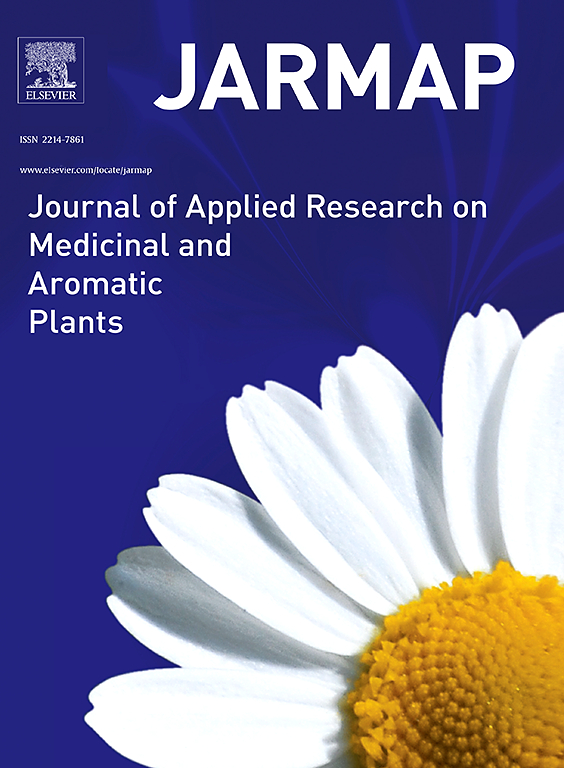Effective SSR markers for assessing population structure, genetic diversity, and volatile compounds in Atractylodis Rhizoma
IF 3.6
2区 农林科学
Q1 PLANT SCIENCES
Journal of Applied Research on Medicinal and Aromatic Plants
Pub Date : 2025-05-01
DOI:10.1016/j.jarmap.2025.100642
引用次数: 0
Abstract
In this study, we aimed to develop SSR molecular markers for assessing the population structure and genetic diversity of Atractylodes lancea (AL) and Atractylodes chinensis (AC), with a focus on their volatile compounds. By utilizing transcriptome data from AL, we successfully developed 29 pairs of highly polymorphic SSR primers, generating 264 distinct alleles. Cluster analysis revealed three distinct populations: Mao Mountain, Dabie Mountain, and samples from other locations and primers with high discriminatory power were selected. Additionally, a representative core subset of 106 samples was selected from the original germplasm, capable of representing over 99 % of the genetic variation. This core subset provides an efficient resource for future studies on population genetics and trait association. The Support Vector Machine (SVM)-based method achieved an accuracy of 98.8 % in distinguishing Atractylodis Rhizoma (AR) varieties. GC-MS screening identified 24 potential differential metabolites between the two species, with correlation analysis showing significant association. This study successfully developed SSR molecular markers for analyzing genetic diversity in AL and AC and established a reliable method for identifying AR medicinal varieties. These findings provide a solid foundation for future quality control of AR and the selection of superior germplasm.
白术群体结构、遗传多样性和挥发性物质评价的有效SSR标记
本研究旨在利用SSR分子标记对苍术(Atractylodes lancea, AL)和中国苍术(Atractylodes chinensis, AC)的居群结构和遗传多样性进行评价,重点分析其挥发性成分。利用AL的转录组数据,我们成功开发了29对高多态性SSR引物,产生264个不同的等位基因。聚类分析显示,毛山、大别山和其他地区的样本具有明显的种群特征,并选择了判别能力强的引物。此外,从原始种质中选择了106个样本的代表性核心子集,能够代表99% %以上的遗传变异。这一核心亚群为今后的群体遗传学和性状关联研究提供了有效的资源。基于支持向量机(SVM)的方法对苍术品种的鉴别准确率达到98.8 %。GC-MS筛选鉴定出24种潜在的两种差异代谢物,相关分析显示相关性显著。本研究成功开发了用于分析AR和AC遗传多样性的SSR分子标记,为AR药用品种的鉴定建立了可靠的方法。这些研究结果为今后AR的质量控制和优质种质的选择提供了坚实的基础。
本文章由计算机程序翻译,如有差异,请以英文原文为准。
求助全文
约1分钟内获得全文
求助全文
来源期刊

Journal of Applied Research on Medicinal and Aromatic Plants
Pharmacology, Toxicology and Pharmaceutics-Drug Discovery
CiteScore
6.40
自引率
7.70%
发文量
80
审稿时长
41 days
期刊介绍:
JARMAP is a peer reviewed and multidisciplinary communication platform, covering all aspects of the raw material supply chain of medicinal and aromatic plants. JARMAP aims to improve production of tailor made commodities by addressing the various requirements of manufacturers of herbal medicines, herbal teas, seasoning herbs, food and feed supplements and cosmetics. JARMAP covers research on genetic resources, breeding, wild-collection, domestication, propagation, cultivation, phytopathology and plant protection, mechanization, conservation, processing, quality assurance, analytics and economics. JARMAP publishes reviews, original research articles and short communications related to research.
 求助内容:
求助内容: 应助结果提醒方式:
应助结果提醒方式:


